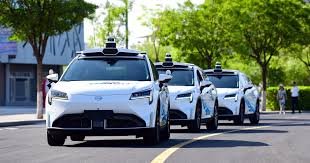
The hum of a self-driving vehicle is no longer a science fiction fantasy, but a burgeoning reality. Robotaxis are poised to revolutionize transportation, promising efficiency and potentially lower costs. Yet, this technological leap forward is not without its emotional and economic baggage. It’s a shift that cuts deeper than just automation; it strikes at the core of human livelihood and societal fabric.
What Lies Beneath the Shiny Exterior?
The allure of robotaxis is undeniable: no more surge pricing, potentially safer roads, and the convenience of on-demand, driverless transport. However, beneath this polished surface lies a turbulent sea of anxieties. The driver, once a vital cog in the ride-sharing machine, now faces obsolescence. For many, driving isn’t just a job; it’s a source of income, independence, and social interaction. The prospect of being relegated to the sidelines by an algorithm ignites a potent cocktail of fear and resentment. The feeling of being reduced to a mere “cost center,” a dispensable element in a profit-driven equation, is a bitter pill to swallow.
Meanwhile, the rider, initially enticed by the promise of effortless travel, grapples with a paradoxical dilemma. While the allure of cheaper, readily available rides is strong, a nagging sense of unease lingers. The absence of human interaction, the loss of that familiar, albeit fleeting, connection with a driver, creates a sense of detachment. The convenience is undeniable, but at what cost to human connection and the sense of community?
Furthermore, the underlying economic model of ride-sharing, already strained, faces a critical juncture. Will robotaxis finally unlock the promised profitability, or will they expose the inherent fragility of a system built on unsustainable pricing and precarious labor?
Robotaxis present a double-edged sword. While promising efficiency and cost-effectiveness, their arrival raises critical concerns.Job displacement for drivers and the erosion of human connection for riders are significant emotional and societal costs. Moreover, the viability of the current ride-sharing economic model remains uncertain, with robotaxis potentially either solving or exacerbating existing financial vulnerabilities. Ultimately, the successful integration of robotaxis hinges on balancing technological progress with human well-being, ensuring a future where innovation serves, rather than displaces, society.

